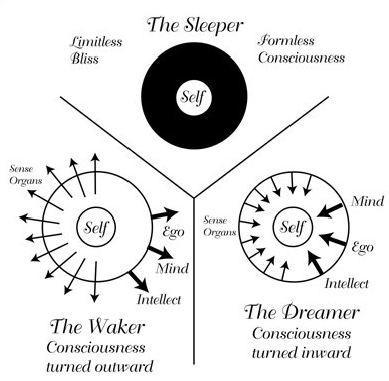#blissfulSelf
Explore tagged Tumblr posts
Text
Mandukya Upanishad - An ancient Sanskrit text on the nature of Reality


Mandukya Upanishad Mandukya Upanishad - An ancient Sanskrit text on the nature of Reality by James Swartz, guides the reader through the Mandukya. The aim of the Mandukya is to analyze the creation and arrive at truth, the limitless I. From the introduction: "The Aranyakas or Upanishads, the third portion of each Veda, commonly known as Vedanta, agrees and delivers an “absolute” knowledge that, under the right circumstances, reveals the limitless blissful Self and destroys the suffering arising from the belief in oneself as a limited being." Download the book here:

Mandukya Upanishad
What is the Mandukya about?
The Mandukya Upanishad is one of the principal Upanishads in Hindu philosophy. The text is notable for its discussion of the concept of Om and the theory of four states of consciousness. Here's a brief overview: - Context and Significance: The Mandukya Upanishad is the shortest of all the Upanishads and is associated with the Atharvaveda. Despite its brevity, it's highly revered in the Vedantic tradition for its profound philosophical insights. - The Symbol of Om: A significant portion of the Upanishad is dedicated to explaining the symbol 'Om' (AUM), which represents the ultimate reality and is considered the essence of the Vedas. The text elaborates on how each part of 'AUM' corresponds to different states of consciousness and aspects of the universe. - Four States of Consciousness: The Mandukya Upanishad introduces the concept of four states of consciousness: - Waking (Jagrat): The external, material state, where consciousness is turned outward. - Dreaming (Swapna): The internal state, where consciousness is turned inward. - Deep Sleep (Sushupti): The state where there is neither desire nor dreams, and consciousness is unified. - Turiya: The fourth state, representing pure consciousness itself, beyond the previous three states. It is described as the background that underlies and transcends the other three states. - Philosophical Interpretations: The Upanishad has been the basis for various philosophical interpretations, especially in the Advaita Vedanta tradition. Adi Shankara, a revered Indian philosopher, wrote an extensive commentary on the Mandukya Upanishad, emphasizing the non-dualistic (Advaita) nature of reality. - Influence: The teachings of the Mandukya Upanishad have deeply influenced various schools of Hindu philosophy, especially those concerning the nature of reality, consciousness, and the ultimate truth. - Spiritual and Meditative Practices: The Upanishad has also been used as a guide for meditation, with practitioners often focusing on the symbol 'Om' to transcend ordinary states of consciousness and realize the unity of the self with the ultimate reality. The Mandukya Upanishad, with its profound and concise teachings, continues to be a significant text in the study of Hindu philosophy and spirituality. Read the full article
#blissfulSelf#Hinduphilosophy#jagrat#JamesSwartz#limitlessI#Mandukya#natureofReality#Sanskrit#suffering#Sushupti#Swapna#Turiya#Upanishad#Vedanta
6 notes
·
View notes